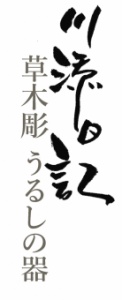About Lacuerware
About Lacquer
Lacquer or Urushi Japanese is the sap of the lacquer tree and has been used in traditional Japanese life for at least 9,000 years. It dates back to the Jyomon period in Japanese history when artisans learned how to refine the initially poisonous sap for use in coating pottery and different types of wooden items.
Later it became a staple in the decorative arts and was used on a wide variety of objects from Buddha statues to bento boxes for food. Today urushilacquerware is known the world over for its outstanding beauty and durability, and has a central place in Japanese culture.
Wabi Sabi
In traditional Japanese aesthetics, wabi sabiis a concept centred on the acceptance of transience and imperfection, and is probably the most characteristic feature of what is viewed as traditional Japanese beauty. Wabi sabinurtures all that is authentic by acknowledging three simple realities: nothing lasts, nothing is finished and nothing is perfect.
The idea is at the heart of Japanese life, and is reflected in both pottery and lacquerware. In the Japanese tea ceremony, for example, cups are often rustic and simple looking, with shapes that are not quite symmetrical and colours or textures that appear to emphasise an unrefined or simple style.
In this way they reflect ideas that are at the centre of Japanese thinking. That beauty, like life, is imperfect, impermanent and incomplete. Urushilacquerware reflects this thinking.
Taking Care of Lacquerware
Lacquerware likes moisture, and is made to be used and washed every day. Non-use can see lacquerware become dry. The more you use it the more the character and glaze will become apparent. Just use normal kitchen soap with a fine fibre sponge, and wipe with a fine fibre cloth. Although it is durable and can be used with hot water and oil, lacquerware is not suitable for the dishwashing machine!
Antibacterial Action
Urushilacquerware is proven to offer a natural anti-bacterial action with no harmful effects to humans. Widely tested, this beautiful and durable natural coating is regularly used over the New year period in Japan to keep food fresh for three days.
